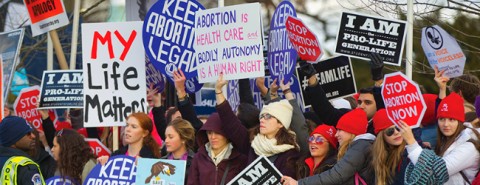Choices and lives: The changing politics of abortion

Those who attempt to limit abortion in the United States are often described by their opponents as “moving backward.” In the summer of 2013, for instance, the Texas legislature moved to ban abortion after 20 weeks and to require all abortion facilities to offer women easier access to hospitals in case abortions go wrong. Writing in the Washington Post, Jamila Bey spoke for many pro-choice people when she claimed that Texas was trying to “turn back the clock” on women’s rights.
But those who view Europe as more progressive than the United States on social issues like abortion might be surprised to learn that the Texas law is rather tame in comparison to European restrictions. Belgium, Denmark, France, Germany, Greece, Ireland, Italy, Holland, Spain, and Sweden restrict abortions to well before 20 weeks. Many countries draw the line at 12 weeks, and many require that the procedure be done in a hospital.
Health care. Paid maternity leave. Ecological concern. Especially for progressives, Europe stands for ideas and policies to which many hope the United States will aspire. But something that I call the Costanza strategy is in effect in the United States. I’ve named this phenomenon for the character George Costanza in Seinfeld, who once adopted a strategy of doing the opposite of every instinct he had. While Republicans usually stand for small government, and Democrats energetically use government to protect the vulnerable from marginalization and injustice, both parties tend to “do the opposite” when it comes to abortion.





